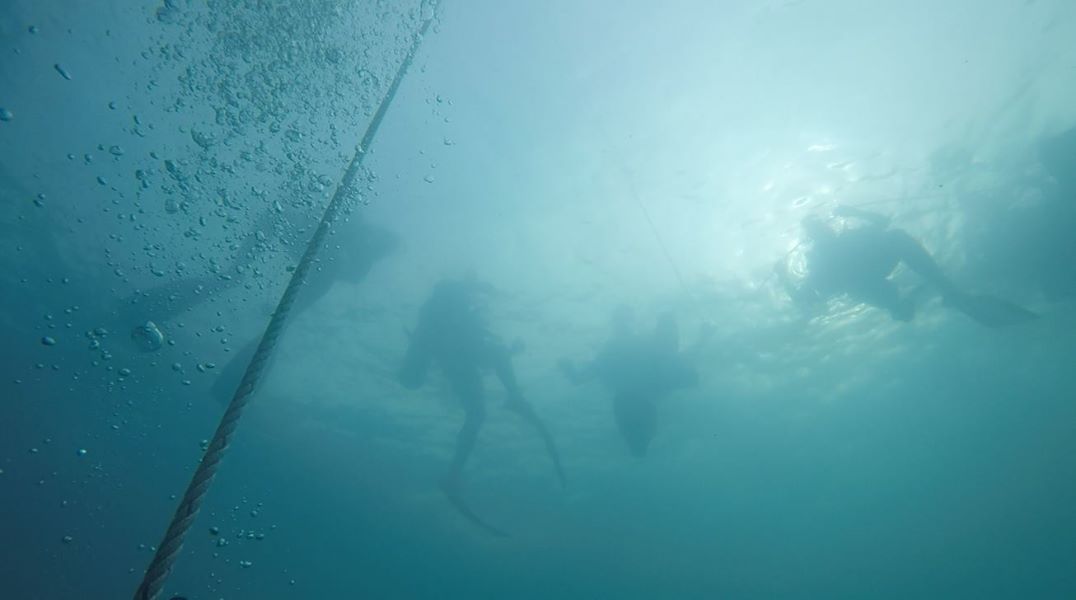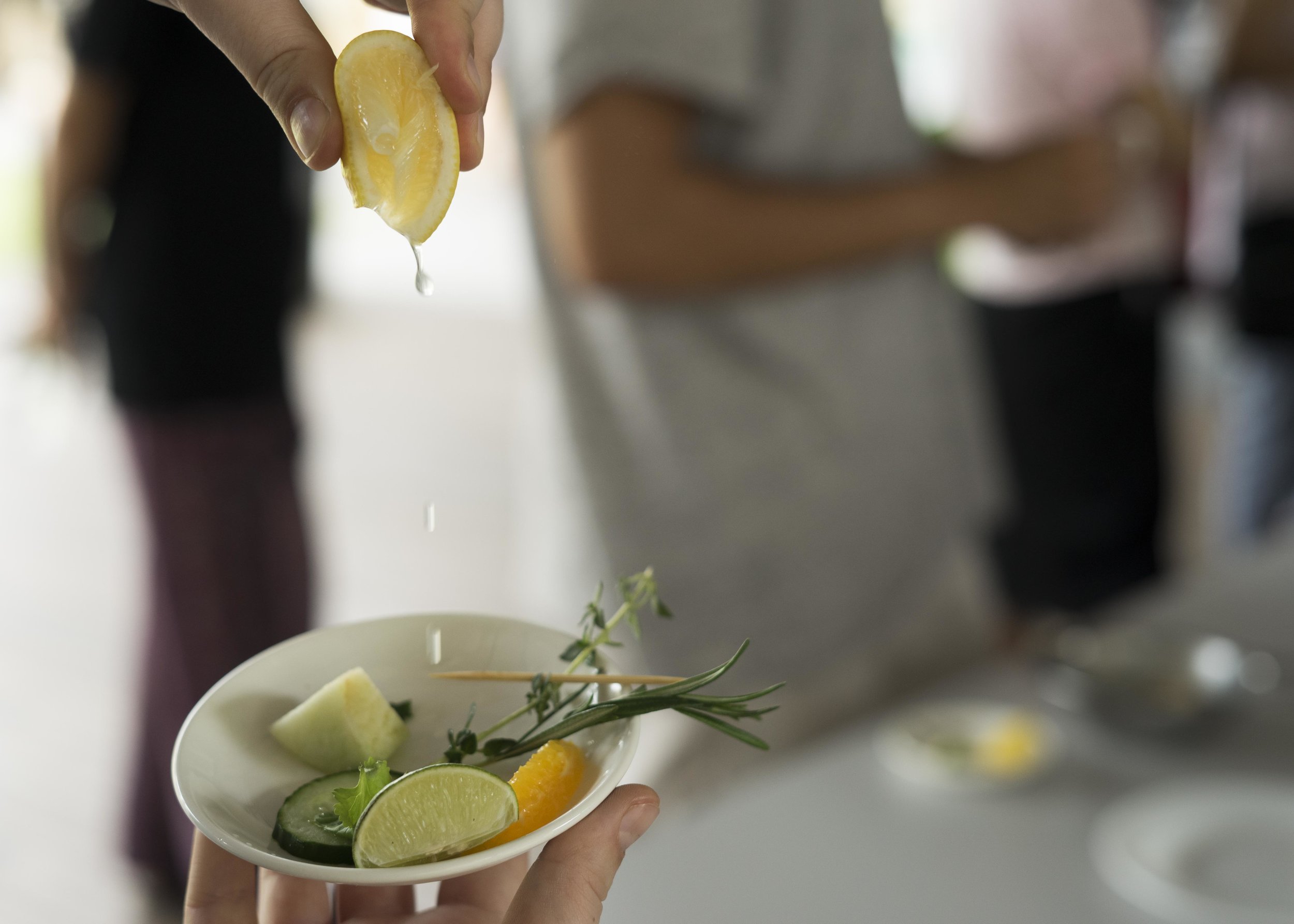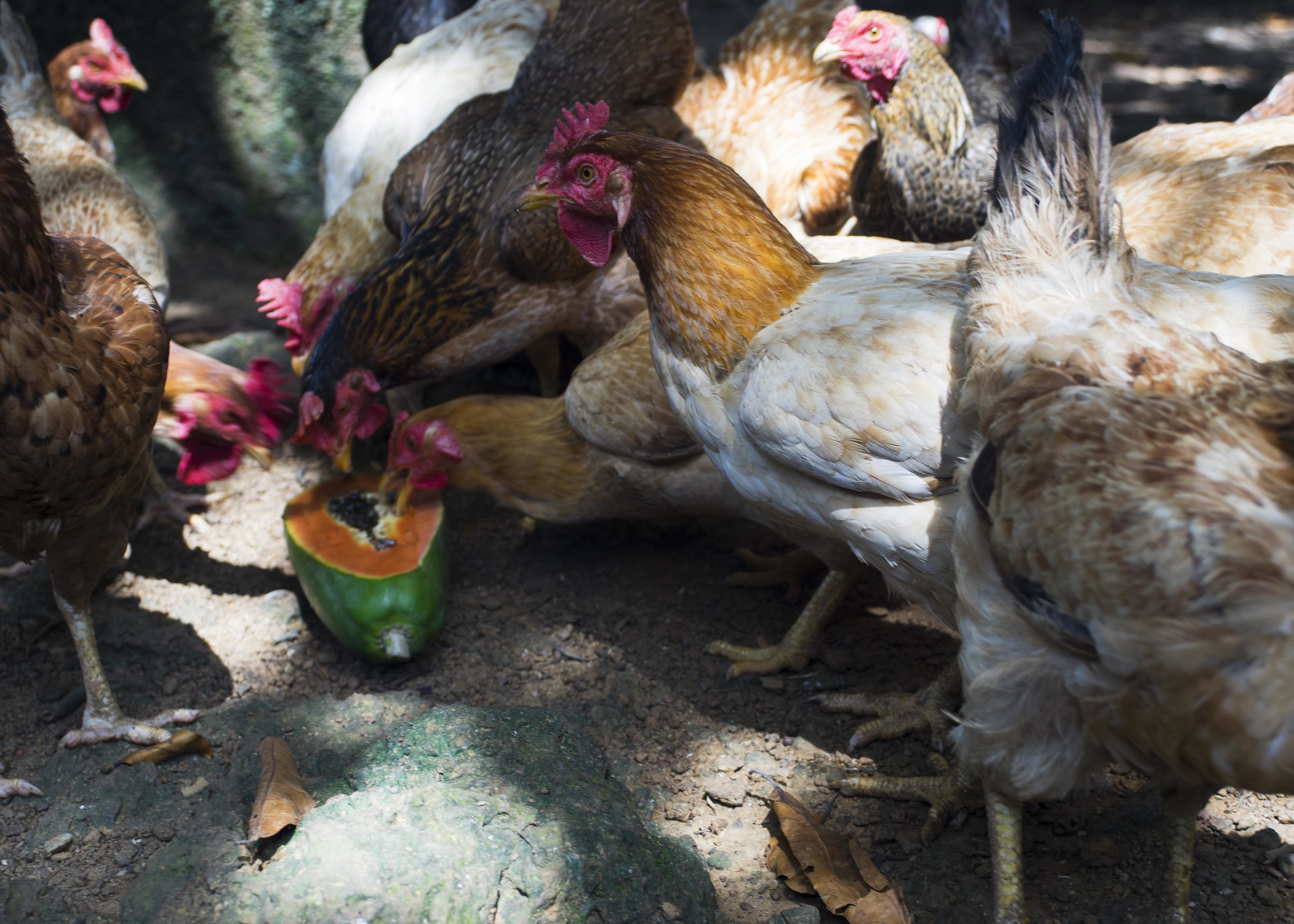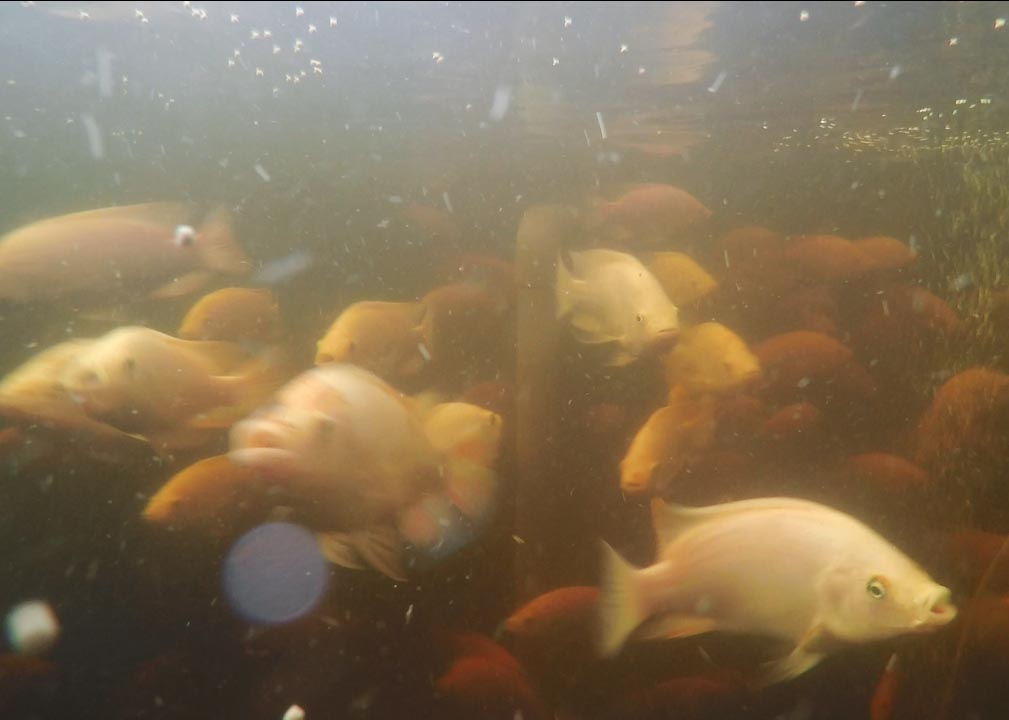Sungai Petani Week Two
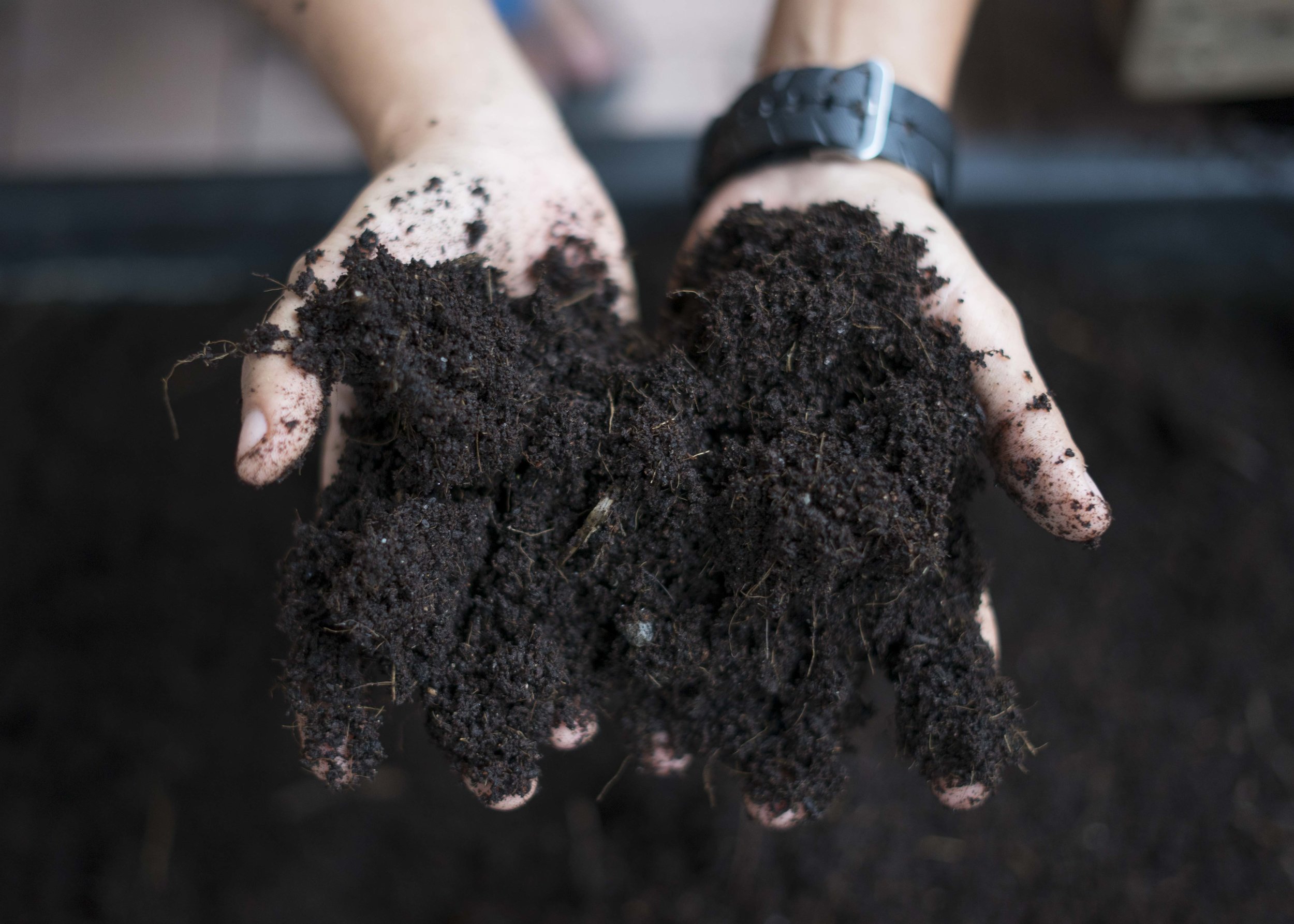
WHAT'S ON YOUR PLATE?
When you cook your own food, where do you put the food scraps? The trash? A compost pile? Directly into your garden? My guess is that most people reading this unfortunately still put food scraps and other organic waste into the trash. Landfills are over 40% food right now. Thats a huge amount of resource we could be using to turn into healthy soil. Want to help divert waste from the landfill and provide a resource to every living being on the planet? Fun fact: all the soil on this planet makes up 40% of the biodiversity on the planet. That's right, 40% of the species on our planet are beneath our feet. These microorganisms are keeping the soil healthy so it can nourish the roots of all the organic resources we use.
To start composting it's really simple. Find a bucket or container you can seal shut. You can find one at a gardening or hardware store, order a fancy one from amazon, or simply make your own at home. Next, start putting your food waste into the bucket! If you have space at home you can use a larger barrel or bucket outside to put the waste. Occasionally mix it a bit and in roughly 3 months or so you will have some healthy soil. If you live in an apartment first see if your city provides roadside compost pick-up. In Seattle, this is mandatory. If not, find a community garden, a friend's garden, or another place that is interested in using your food waste for good soil. When you start composting know you are helping feed 40% of the biodiversity on this planet AND diverting a huge amount of waste from the landfill. Thanks!
After a host of fun days in Penang at the In-Between Arts Festival it was nice to have a day back in Sungai Pentani at the farm. After sleeping after a late night we had our usual breakfast of oatmeal, chia seeds, bananas, dates, prunes, and dragonfruit. It felt extra special eating the prunes from the lovely family that I met at the festival. I spent most of the day inside working and writing, in a mad attempt to remember and document the previous experiences from Norway and Singapore that were already slipping away from my brain. As my physical being travels, my brain seems to find it especially difficult to fully process the immense amount of new things I am being exposed to. For a very late lunch I was excited to make tofu scramble, a favorite dish of mine. Out in the open-air kitchen with a breeze and shade to make the afternoon heat bearable, I began chopping garlic, onions, and four different types of mushrooms. The selection of mushrooms in the grocery stores here is impressive. Tofu scramble is fairly easy to make. I started by frying up garlic, onions, and mushrooms. Next, I crumbled up two containers of tofu straight into the vegetables and stirred them around. I added some spices different than my typical picks including soy sauce and the spice mix I got at one of the festival workshops. Lastly, I threw in a huge amount of bok choy and chinese kale that Peder harvested from the greenhouse as well as some halved baby tomatoes. After a few more minutes lunch was served! I bravely garnished mine with some chili peppers, and it turned out just enough to not make me cry.
After lunch, Kai Yee asked if we wanted to help sort the worms out of his vermicomposting system. We had been putting all our food waste into a big wooden bin at the farm. We walked over and as Peder started filming I helped Kai Yee catch the worms in the soil and put them in a bowl. I was surprised at how squirmy some of the worms are! They’re quick fellows. Kai Yee uses African night crawler worms in his system because they will travel up to the top layers of compost to help eat it and break it down after the bottom layers are broken down. He said that the large amount of soil we were sifting through only takes two to three weeks to change from compost to soil! I was very impressed with how much quick work these worms are doing. I do not know exactly how long most compost takes to degrade without worms, but I do know that it is many months longer than 2-3 weeks! For dinner we had delicious noodles at iMumMum. Two of the people working at that restaurant serving us had worked on Kai Yee's farm for a few months! We didn't chat much, but they asked for a picture with us, so we got one too!
The next day after our usual breakfast of oatmeal we helped out transplanting more lettuce. I learned that lettuce takes roughly 2 weeks from seeding to be ready to transplant. Don’t pack roots to thick! Lettuce takes another 4 weeks to grow in the system to be ready for harvest. Kai Yee tells people what he has for harvest, because it is too difficult to grow individual orders at this point.
Kai yee went to school for marine biology because he loved to dive! Didn’t get to dive tons for classes unfortunately but his did a bit for his job as an environmental consultant. One project on an island he spent 20 days doing research for a potential floating resort. This island was super popular for diving and had lots of tourism. One time a barge came in and failed to leave before low tide so it crushed a bunch of coral reef. After that tourism was not allowed on the island.
For lunch Peder and Kai Yee went out to an Indian restaurant. I stayed back to do some more work and had some leftover tofu scramble. After lunch we did some more transplanting so Peder could get some more footage for the documentary. Next, Kai Yee showed us how he plants chinese kale into the granite rock in the greenhouse.
I went to go do some more transplanting, which I find to be a bit meditative once I can get into a pattern of popping the plants out, filling the new container with soil, and placing the baby roots in their new home. I am able to keep my mind present in what I am doing instead of getting wrapped up in other thoughts.
The journey to dinner was a rainy ride. During our drive Peder noted, “It’s a nice night for rain”. I asked him what makes a night good for rain. He replied, “It’s dark”. The restaurant we arrived at had a menu strictly in mandarin that I could not make any sense of. Thankfully Kai Yee helped us order. The language barrier made me thankful that we have the opportunity to stay with someone who understands the Malaysian culture and languages better than I ever will. I find it amazing that most people know so many different languages here. I hope to learn another language someday, and am highly considering learning mandarin. For dinner I had rice with veggies, Peder had a noodle dish, and Kai Yee had a rice porridge.
We spent the weekend in Penang, as Kai Yee often does. After a quick breakfast of toast, bananas, and dragonfruit, we hopped in the car and drove an hour to the city. Kai Yee had some deliveries of greens to make to customers in the morning. His first stop was some customers at the Hin Bus Depot, the only place in Penang that was starting to feel familiar to me. When we drove up into the parking lot there was a wellness program going on that involved a bunch of people on stage doing a dance workout. It was wonderful seeing all different ages having a good time together. Kai Yee delivered some greens for a local and some microgreens for Wholey Wonder, the vegan restaurant we love. Tammy, a yoga teacher and cook there was interested in using the microgreens as a garnish for a new menu item: vegan pizza! I hope I get to try it soon.
We stopped for some coffee and kaya toast before the next delivery. I was in the mood for a non-sweet drink which can be hard to find around here so I ordered black coffee. It was some of the strongest iced coffee I have ever had. We also ordered some toast with kaya, but the vendor was unfortunately out of kaya. Luckily the next morning we were able to try it! A sign next to our table was advertising Canadian soy milk. Kai Yee explained that most locals trust imported food from America and Europe more than from Asia.
After the next delivery, a quick drop off at an apartment, we visited Kai Yee’s uncle. His uncle is an investor in the solar farm Kai Yee’s aquaponics farm is on. His uncle’s house was a beautiful residence surrounded by lots of plants and fish. Inside his house he had a huge fish pond and behind his house we explored his workshop and his very own aquaponics system! In his workshop he has a system for cutting wine bottles in half to turn them into drinking glasses, soap holders, candles, light covers, and much more.
After a warm visit, we went to lunch at Temple of the Arts, a restaurant that asks customers to pay as they like. This place is also teaches fine arts including dance and music. We took off our shoes before entering, grabbed a table, and then went to the buffet to get food. All of it was vegetarian, which made it easy for both of us. For desert we each had a small bowl of segal, a dish made from palm that is transparent when cooked. The food was delicious.
Our next stop was a food pantry that we were volunteering at. We met up with many people on the street and started unpacking boxes of toiletries and food. We had to break down the items to make bags containing one of each item. After doing this for a bit I looked up and we had made so many packages! Once we finished I saw that two lines of people receiving the donations had formed on either side of the tables we had set-up. Slowly people came to get their donation. It warmed my heart to see all the kindness in this place.
After volunteering we headed to a cafe for some drinks. The cafe called Narrow Marrow owned by Alvin, a friend we met at the Hin Between Arts Festival I got coffee and Peder and Kai Yee tried Toddy, a workers drink made from fermented coconut. The cafe had a welcoming artistic vibe. We met a new friend there, Jasmine and talked about farming a bit. She said, "there's quite a lot of people our age farming these days". After chatting a bit we met up with Danny, a friend of Kai Yee's we had also met at the Hin festival and went to dinner at a Thai restaurant right next to the ocean. This dinner was for all the volunteers that had helped out at the food kitchen earlier in the day. Dish after dish of delicious food came to the table. During conversation we talked about food differences in other cultures. I learned that Ketchup is actually the cantonese word for tomato sauce! Also, some foods that people tried for the first time when coming to the US included grapefruit and kiwi. I enjoyed more tasty food with good company, a pattern that seems to be continuous on this trip.After dinner we went to hangout at Hin for a launch part at one of the shops there. We met some more interesting people before heading back to crash at Danny's place.
We slept in on Sunday, which we all needed. For breakfast we had toast with kaya, jam, and peanut butter. I was excited to finally try kaya, which is a spread made from coconut milk, egg, and sugar. Later that night I looked up a vegan recipe for kaya and you can simply replace the egg with pumpkin or sweet potato!
As we ate kaya toast and pears I chatted with Khing about the In Between Arts Festival. Meanwhile, Danny’s friend came over to shoot some photos for their awesome new soap line: earthoskin. After some chatting, photography, and messing around with cameras, Khing suggested we go to lunch at Sushi Kitchen. She told us it was a vegan restaurant which was exciting for me. This is the second 100% vegan restaurant we have been to on this trip so far. We walked the short (and very hot) few blocks to the restaurant and got a table. Everything on the menu looked stellar to me and after some debate I chose to get sweet potato noodles. Peder got fried udon and Khing ordered a sushi plate for everyone to share.
After lunch we indulged in some “touristy” activities and walked around Armenian street, one of the most famous tourist spots in Georgetown. As we turned the corner, I could immediately tell we were there when the number of people and cameras increased. The first iconic thing we saw was one of the most famous murals in Penang depicting two children on a bicycle. The mural includes half of a bicycle sticking out of the wall! There was a line of people waiting to take photos, so I decided to just take photos of all the people taking photos. Next, we spotted a storefront with the words "Durian Haven" over the door, which obviously drew us in. Peder and I are on a quest to find fresh durian, but this day we settled for durian ice cream. Kai Yee told us Durian is not in season in Malaysia now but that he is almost certain we will be able to find some in Thailand. In my opinion, the ice cream was definitely a step up from the freeze dried durian we had tried a few days back.
The next place we explored on Armenian street was two different Chinese temples. The first was Hock Teik Cheng Sin Temple. As we walked through and observed Kai Yee explained a few traditions to us. He showed me a tall container of wooden sticks and said that people will randomly choose a stick to tell their fortune. The stick they choose has a number on it, and then the individual has to go to another place in the temple to get a piece of paper that tells their fortune. I got to see these papers in the next temple we visited. Kai Yee said the fortunes are written in such an old language that many people need help translating the fortune. He then told me before even being able to see their fortune, people must pick up two curved moon-shaped wooden blocks that are flat on one side and curved on the other. One will throw them on the ground, and depending on if the blocks land on the curved or flat side, one may or may not be allowed to ask for a fortune. At the next temple I saw some people burning red and gold pieces of paper in what looked to me like an oven. Kai Yee explained that these people were sending money to their relatives that had passed away.
After the temples we walked around a few more shops and got some coffee. I enjoyed exploring the murals, sometimes hidden in alleys or other slightly out of sight places. I noticed a lot of cats in the murals I saw and wondered if it meant anything deeper, or if people here just really love cats! I saw several metal sculptures explaining bits of Georgetown history. Malaysia used to be controlled by the British, and the impact that had clearly lingers in the walls of old structures.
Our next stop was to visit a Batik store that Nicole had mentioned to Peder. Many of the clothing items in the shops on Armenian street seemed like they may have been mass-produced, which is 100% okay, but we were looking for traditional Batik! We searched a bit, popped into a coffee shop for directions, and eventually found our way. I thought it was so cool how this coffee shop decided to use baskets for lampshades! I also noticed the tables had printed words on them, often ending with "Lah". This is something many people here will add to the end of words.
We finally made it to the Batik store. Less than a minute after we entered the owner came and started talking to us, explaining that the store wasn't supposed to be open now, he was just coming in to do some work. Fortunately, he was more than happy to let us look around and chat. He was very excited to share his extensive knowledge of batik with us. Batik is a textile art where wax is put on fabric to make a pattern before dying it with colour. The wax repels the dye. He told us to be sure and check that the pattern is on both sides of the fabric to make sure a fabric is actually a batik. Popular motifs include butterflies, flowers, and geometric patterns. The shop owner showed us the traditional tools used to melt wax and apply wax to the fabric. He also explained the difference between block printing and batik. Block printing is a continuous pattern traditionally made from a wooden stamp. The ones he showed us were metal, as those will last longer. The block prints will have cracks in the dye from using rosin on the fabric. To tell if a block print is actually hand-made he said to check if the cracks are actually unique everywhere and not in a pattern. They should be unique. After what seemed like a mini batik workshop, Peder and I each bought some fabric and we all thanked the kind man. For dinner we went to a vegetarian Chinese buffet. They had so many new (to me) types of soy "fake meat" that were fun to try. At the end of the meal I bought two more soy products to try, soy jerky and vegetarian squid.
Our first day back on the farm after a weekend in Penang was rather laid back. I had my usual breakfast of oatmeal, dates, prunes, chia seeds, and mini bananas. During the morning I skyped Viltė for an hour before stretching my legs and walking the few feet to the office to do some more work. Viltė and I talked about many things including the difficulties of interpreting communication. I told her that sometimes I find myself getting frustrated from the emotions I perceive in someone else’s mind. A simple example would be getting frustrated because I think Peder is annoyed at me for asking him too many questions about something or other. In reality, I can’t be sure that I am correctly interpreting his tone of voice or actions as being annoyed at me unless I outright ask him, in which he may or may not tell me the truth. I am trying to constantly remind myself that there is always so much that I do not know. I think this notion applies to traveling and learning about new cultures a lot.
As a snack we tried the soy jerky and soy squid I purchased at the vegetarian restaurant last night. The jerky was not at all chewy, but more like a chip. After trying the soy squid, Kai Yee said the texture was almost exactly like squid! I’d say even being a vegetarian my whole life I am sometimes hesitant of “fake meat” products but these two were definitely fun to try. After some snacks I got to work writing and blogging and Peder worked at editing and sorting photos. For lunch we went to a noodle restaurant called Urban Delicious. When we were looking at the menu, Peder asked, "What is sky juice?" Kai yee replied, "Water". I'd say that's the best marketing of water I've ever seen on a menu. We all got noodles to eat I tried a lemongrass drink, and Peder tried a longan drink. After some more work back home, Kai Yee made us a dinner of noodles, greens, and mushrooms. I tried mixing in some vegetarian squid which was actually quite tasty. A bit after dinner we finally tried the seaweed lays Peder bought a week or so ago and were both surprised at how tasty they were!
The next day was fairly laid back and unfortunately I was feeling a bit under the weather. I had a breakfast of fruit and avocado toast. Peder shot some video of Kai Yee transplanting lettuce. After doing some writing and trip planning and taking a short rest Peder invited me out to have lunch with them. Kai Yee made a delicious egg and veggie dish. After some more work that evening, we went out to dinner at a Chinese restaurant where we got fried lotus, sweet potato leaves, and another vegetable dish.



































































































































































